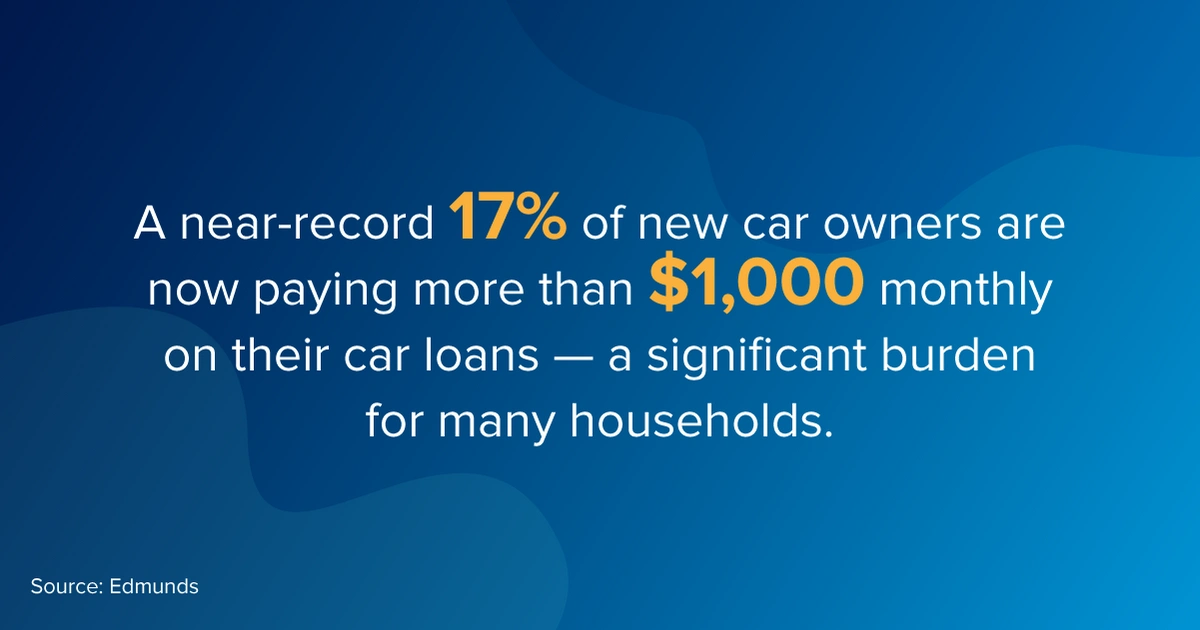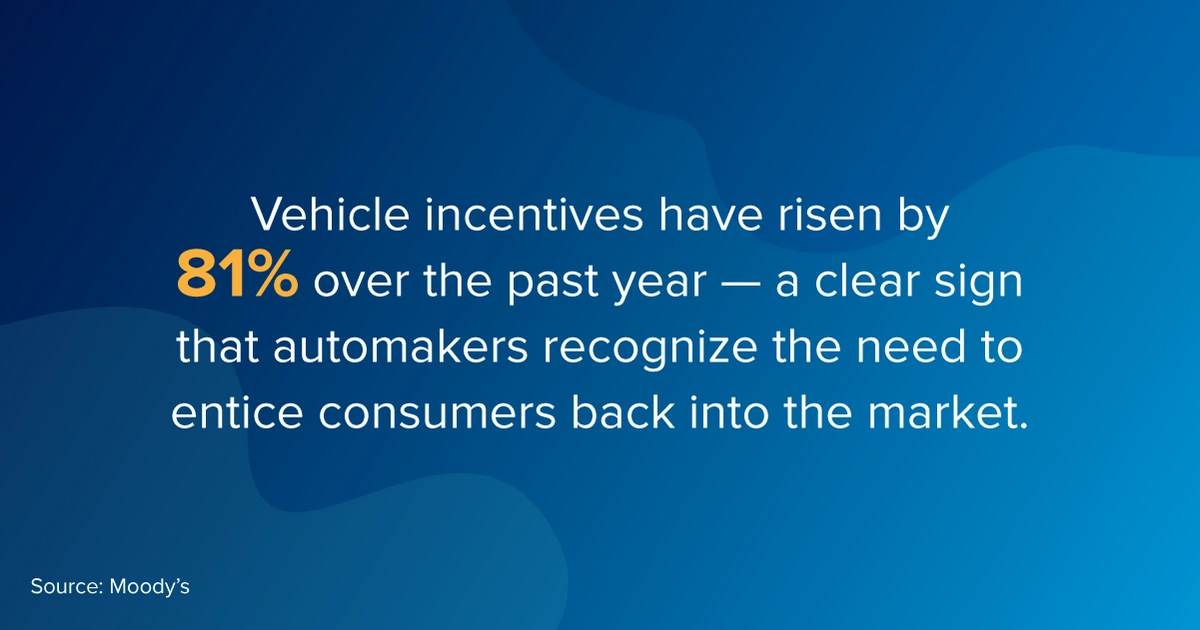
Don’t Pump The Brakes On Incentives
Vehicle incentive management offers a promising opportunity for automotive companies
As you navigate the complexities of the current economic landscape, one question looms large for the automotive industry: Is it time for rebates and incentives to return to pre-pandemic levels? The answer is a resounding yes. Despite historically high sticker prices, elevated interest rates, and increasing consumer concerns about affordability, there is a solid case for automakers to bring back and optimize their vehicle incentive programs. In doing so, you can address the dual challenges of dampened consumer demand and the need to control costs.
It’s time to get vehicle incentives back on the road
The auto industry is no stranger to the ebb and flow of the economy, but the current environment presents unique challenges. Sticker prices for cars and trucks are higher than ever, driven by inflationary pressures surrounding supply chain, labor, shipping and energy costs. At the same time, rising interest rates have made credit less accessible, further straining the consumers' ability to purchase new vehicles.
As affordability challenges persist, consumers are seeking more flexible financing options and greater transparency in pricing. In fact, recent data underscores just how stretched buyers have become – Edmunds reports that a record 20.3% of new-car shoppers in Q1 2025 opted for 84-month loans, highlighting growing financial strain among consumers. In this climate, incentive programs that emphasize low APR financing, longer-term leases and tailored rebate structures can make the difference between a closed sale and a lost lead. OEMs and dealers must adapt their strategies to these evolving financial realities to attract budget-conscious shoppers and protect market share.
I believe one critical strategy that can help automakers navigate this turbulent period is the revival and optimization of vehicle incentives. While incentives may not have returned to their pre-pandemic levels, they are indeed making a comeback.
The problem with incentives: A drag on performance
However, the traditional approach to incentives has its pitfalls. Historically, automotive manufacturers have invested heavily in these programs, often spending 10% to 20% of their revenue on incentives. While these expenditures are crucial for meeting demand and driving revenue growth, they are also a significant source of revenue leakage. In a typical profit and loss statement, dealer margin is the most extensive line item, with promotional incentive expenses coming in a close second.
The problem is that many automakers still rely on outdated, manual processes to manage their incentive programs. This approach is inefficient and prone to errors, which can result in significant financial losses. A company spending $15 billion annually on incentives might lose anywhere from 1% to 5% of that amount due to mismanagement — a staggering figure!
4 key factors contribute to this leakage:
- Inaccurate Reporting: The inability to accurately match incentive spending with payments to dealers can lead to overpayment of rebate claims.
- Manual Errors: Reliance on manual data entry and a lack of adequate controls increase the likelihood of mistakes, such as improperly paid incentives or lower-than-expected margins.
- Dispute Resolution: Missing details for dealer claim disputes can lead to time-consuming reconciliations between planned and actual data.
- Lack of Visibility: Without end-to-end visibility into revenue, Gross-to-Net profit, and program effectiveness, it isn’t easy to gauge the true impact of incentive programs.
The good news is that these challenges are not insurmountable. By upgrading incentive management systems, OEMs can significantly reduce the risk of errors and improve overall operational efficiency.
Tuning up the incentive engine
So, what’s the solution? I believe the answer lies in automating the incentive management process to better manage revenue. As a result, automakers will gain several key benefits:
- Improved Planning: By aggregating and managing dealer claims data more efficiently, companies can confidently plan their incentive programs.
- Enhanced Communication: Timely and clear communication with dealers about planned incentives can help build stronger relationships and reduce disputes.
- Accurate Analysis: Automakers can determine true profitability and identify improvement areas by analyzing incentive program performance before and after implementation.
- Real-time Insights: Automated systems provide real-time, actionable insights that can reduce complexity, control costs and protect margins.
- Consolidated Reporting: Automakers can generate standard and ad-hoc KPIs with data consolidated from multiple sources, improving transparency and decision-making.
One major vehicle manufacturer has already realized these benefits, exceeding earnings expectations thanks in part to its streamlined incentive management process. While this is not the sole reason for its success, it underscores the importance of having a well-tuned incentive engine.
In a time of economic uncertainty, vehicle incentives are more important than ever. By modernizing their incentive management systems, automakers can reduce costs and improve their operational efficiency and bottom line. As the industry continues to evolve, those who take the lead in optimizing their incentive programs will be well-positioned to thrive in the years ahead. So, don’t pump the brakes on incentives — get them back on the road and drive success in the years ahead.
Want to learn more about optimizing incentive programs?
Get the latest news, updates, and exclusive insights from Vistex delivered straight to your inbox. Don’t miss out—opt in now and be the first to know!

